Smart Design Competing In Global Markets Video
Event marketing | 8 November 2019
Event Marketing: The 2020 Guide
Welcome to your guide to event marketing in 2020 and beyond. Discover best practices for selling out your event, leveraging event data, aligning with the rest of your organization and more.
What Is Event Marketing?
Event marketing is the promotion of a product, brand, or service through in-person interactions. There are many forms of event marketing and each can be catered to address a marketer's specific goals.
Event marketing can be hosting an event to build stronger relationships with prospects and customers. It could also be attending an event as an exhibitor to educate potential customers on your company's product offering. Event marketing can even include digital events such as webinars or live-streamed workshops.
Each of the above examples leverages the power of live experiences to achieve business goals.
Why Is Event Marketing Important?
According to the Event Marketing 2019: Benchmarks and Trends Report, most marketers believe that event marketing is the single-most effective marketing channel for achieving business goals.
Additional findings from the report include:
- Between 2017 to 2018 the number of companies organizing 20 or more events per year increased by 17%.
- The majority of company leaders are supportive of their company's event strategies, but this support is contingent on the ability of event teams to prove ROI.
- The most successful businesses are spending 1.7x the average marketing budget on live events.
The bottom line: Event marketing is an essential marketing channel for B2B and B2C businesses.

What Is Different About Event Marketing?
At its core, marketing is communication. It is the ability to clearly convey a message at the opportune time. Live events provide the opportunity for one to connect directly with stakeholders and clearly communicate their message. It's no wonder that event marketing continues to grow as one of the most important marketing strategies for today's big companies.
According to Forrester Research, events make up for 24% of the B2B marketing budget. By 2020, 3.2M global professional events will be taking place on an annual basis. Companies are believing in the power of live events and this trend will only continue to grow in the coming years.

Below you will find a thorough and comprehensive guide on event marketing best practices. Whether you're planning a 3-day conference or attending an international trade show, this guide will give you a more complete understanding of event strategies and how to maximize their impact.
Table of Contents
- Types of Events
- How to Measure Event Success
- 3 Tips for Finding the Right Venue
- How to Create An Event Website
- How to Improve Your Event Website SEO
- How to Promote Your Event on Social Media
- 3 Keys to Landing the Right Event Sponsors
- Event Lead Generation Strategies
- Partnership Event Marketing
- Account-Based Event Marketing
- How to Integrate Event Data
- Choosing the Right Event Technology
Types of Events
Improved technology combined with the growing need of events has resulted in a wide range of event types. Having a firm understanding of each type of event will help event marketers determine which ones align most closely their specific goals. Below is a thorough but by no means exhaustive list of event types.
1. Conferences
These large scale events make up a significant portion of the events industry. Conferences can be either B2B or B2C and usually have a schedule filled with engaging speakers, educational workshops, and valuable networking sessions. The most successful conferences are the ones that balance a professional environment with an energetic, social atmosphere.
For example, Apple's World Wide Developer Conference 2019 is a large scale conference. The keynote, content, and product updates cater to the interests of developers and product users. Activities include a highly anticipated speaker and sessions that teach customers how to get the most out of their products.
"I would have to say that for us at Franchise Update Media, our marketing strategy stems from our conferences. Not necessarily the other way around. We diligently analyze the successes and failures of each of our events and build our strategy around the successes, or little wins. We tend to conceptualize our overall conference experience and work backwards from there."
—Katy Geller, Marketing Communications Manager at Franchise Media Update
2. Trade Shows
Trade shows and expos aim to present new products and services from a variety of related brands in a professional manner. Typically these types of events have a theme that ties the booths together.
For example, IMEX America is the largest trade show for event planners. Held in Las Vegas, IMEX America attracts over 12,000 attendees and 3,000+ exhibitors in one place. The event allows industry movers and shakers to meet, mingle, and explore new business connections and innovations.
To learn more about the IMEX brand and their philosophy on designing a successful trade show, check out our interview with Carina Bauer, CEO at IMEX on the IN-PERSON Podcast.
3. Seminars
Seminars usually take place in a more intimate setting and are heavily focused on educating attendees. The smaller group of attendees allows for more in-depth discussions and valuable knowledge sharing. Seminars usually last one day and often times only for a few hours.
For example, the ABM Leadership Alliance held their first seminar in Boston called ABM by the Numbers. The event brought together B2B marketers focused on driving their event strategies with key metrics and gave professionals a channel to share and discuss key learnings and present case studies.
For more information, check out our key takeaways from the event.
 Source: Bizzabo
Source: Bizzabo
4. Internal Company Meetings and Periodic Business Gatherings
Internal company meetings and periodic business gatherings are events used to discuss a select group of topics in order to assess progress, facilitate project kickoffs or to solve a specific problem. They are common in companies with over 25 employees but smaller businesses can also benefit from this event type.
5. Thought Leadership and Networking Events
The goal of a thought leadership or networking events is to present a brand's authority in a particular domain and provide opportunities for people with related business interests to meet and interact with one another. This event type can include VIPs or focus more on general admission.
One example is Forbes Under 30 Summit, which brings together young professionals, A-list speakers, speed-pitching, and the infamous pub crawl. The immersive event allows eager young industry innovators a platform to share their voice and network with peers.
 Source: Forbes
Source: Forbes
6. Ceremonies and Galas
Ceremonies and galas serve a variety of purposes but these formal events have one thing in common: they provide an elegant way of presenting a brand and its product or service. Whether it's a black tie fundraising event in a rented art museum or a kick off for an annual meeting at a conference, ceremonies and galas provide a sophisticated way of marking a special occasion.
One way to celebrate a formal event with customers is through an award ceremony. For example, Oracle hosts the Markie Awards to shine a light on the luminaries in digital marketing and customer experience. This is a great event that honors Oracle customers in a fun and meaningful way.
 Source: Oracle
Source: Oracle
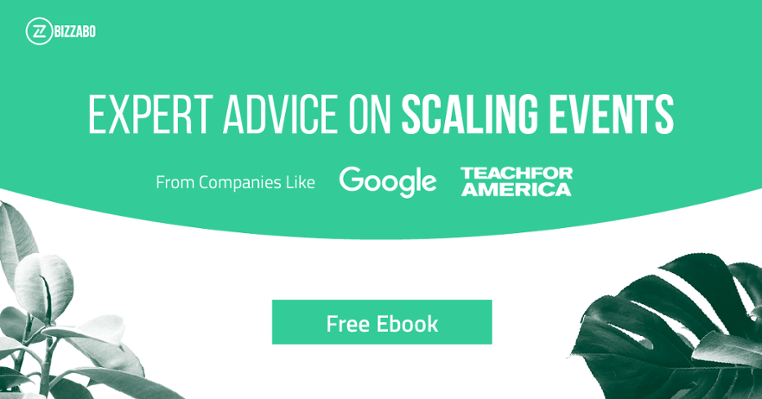
7. Product Launches
Product launches are used to showcase new products or solutions to customers and prospects. The goal of a product launch is to get existing customers and potential customers excited about features and functionalities that are coming to their product.
Every year, Adobe hosts MAX, a creativity conference for users of Adobe's Creative Cloud. Attendees get a front row seat to the latest product updates and innovations from Adobe.
 Source: Adobe MAX
Source: Adobe MAX
8. VIP Events
VIP events (or sales acceleration events) focus on providing the most influential shareholders, customers, and other honored guests with an exclusive (and impressive) experience. The goal of any VIP event is to ultimately increase revenue through maintaining the loyalty of these key figures.
For example, Atlassian held an invite-only CIO Lunch in both New York and Silicon Valley. The VIP event allowed industry leaders to come together to discuss challenges and breakthroughs that were relevant in their field.
 Source: Atlassian
Source: Atlassian
9. Job Fairs and Recruiting Events
The goal of most job fairs and recruiting events are to find and secure talent for their company across a number of departments. Typically held at colleges and universities, this event type is popular among start-ups or companies looking to find fresh minds to help expand their business.
For example, DeveloperWeek attracts developers in San Francisco, New York, Austin, and Chicago. The week-long event includes multiple developer conferences, a hackathon, and a hiring mixer for prospective job seekers.
 Source: DeveloperWeek
Source: DeveloperWeek
10. Team Building
Team building events are internal meetings focused on providing fun and interesting ways for employees to bond. The goal is usually to facilitate relationship building so employees can become better leaders and collaborators. It's also a helpful way to get people from departments without direct contact to be introduced to one another.
11. Field Marketing and Activations
The goal of most field marketing or brand activation events is to form stronger emotional bonds between a company and its audience. Since relationship-building is the primary focus of this event type, it's especially important to know which specific audiences you are targeting to plan the activities accordingly.
A great example of a targeted brand activation is media and lifestyle brand Refinery29's 29 Rooms. The annual event is designed as an interactive "playground for adults" that features a curated selection of experiences with musicians, companies, and content.
 Source: 29Rooms
Source: 29Rooms
12. Virtual Events
Virtual events are ideal for companies that may not have the resources to host a full-scale live event and for companies that cannot afford to travel to an international conference. Virtual events allow people to participate from all over the world and strives for a more globalized and diverse group of attendees. As the technology for virtual and augmented reality continue to evolve at a rapid pace, virtual events may quickly become a mainstream form of live events.
For example, Gainsight's PulseCheck is a virtual event that is recorded and streamed to virtual attendees. This allows attendees to consume content on their time. To increase their audience, Gainsight offers the recording sessions for free to new Gainsight subscribers.
 Source: PulseCheck
Source: PulseCheck
"For the attendee, why are they really coming? When we understand that in the event, we can understand what activations to include."
—Dana Pake, Senior Director, Global experience Programs at InVision
Want to learn more about how InVision manages their global event strategy? Listen to Dana Pake on the IN-PERSON Podcast.
back to top
How to Measure Event Marketing Success
In order to maximize the impact of event marketing strategies, it's necessary to set the right goals and utilize relevant KPI's. Defining and measuring event success is just as important as the event itself. Below are a list of ways to articulate event marketing goals followed by nine metrics to properly measure event ROI, helping to ensure continued success.
SMART Goals
Before diving into the specific KPI's, it is worth mentioning the S.M.A.R.T. acronym to help you better understand how to achieve event marketing success. Defining goals with this method will help you reach your desired results in the most efficient way possible.
"A lesson we learned is to focus on some wildly important goals each year. We knock them out of the park, and let the things that are working well continue on, maybe with some incremental changes."
—Heather Henderson Thomas, Senior Manager of Strategic Operations and Event Experiences at Cisco Live
Looking to learn how Cisco, IBM, Adobe 99U, and Sprint think about events? Check out the IN-PERSON Podcast to catch the world's most daring events and the people that make them happen.
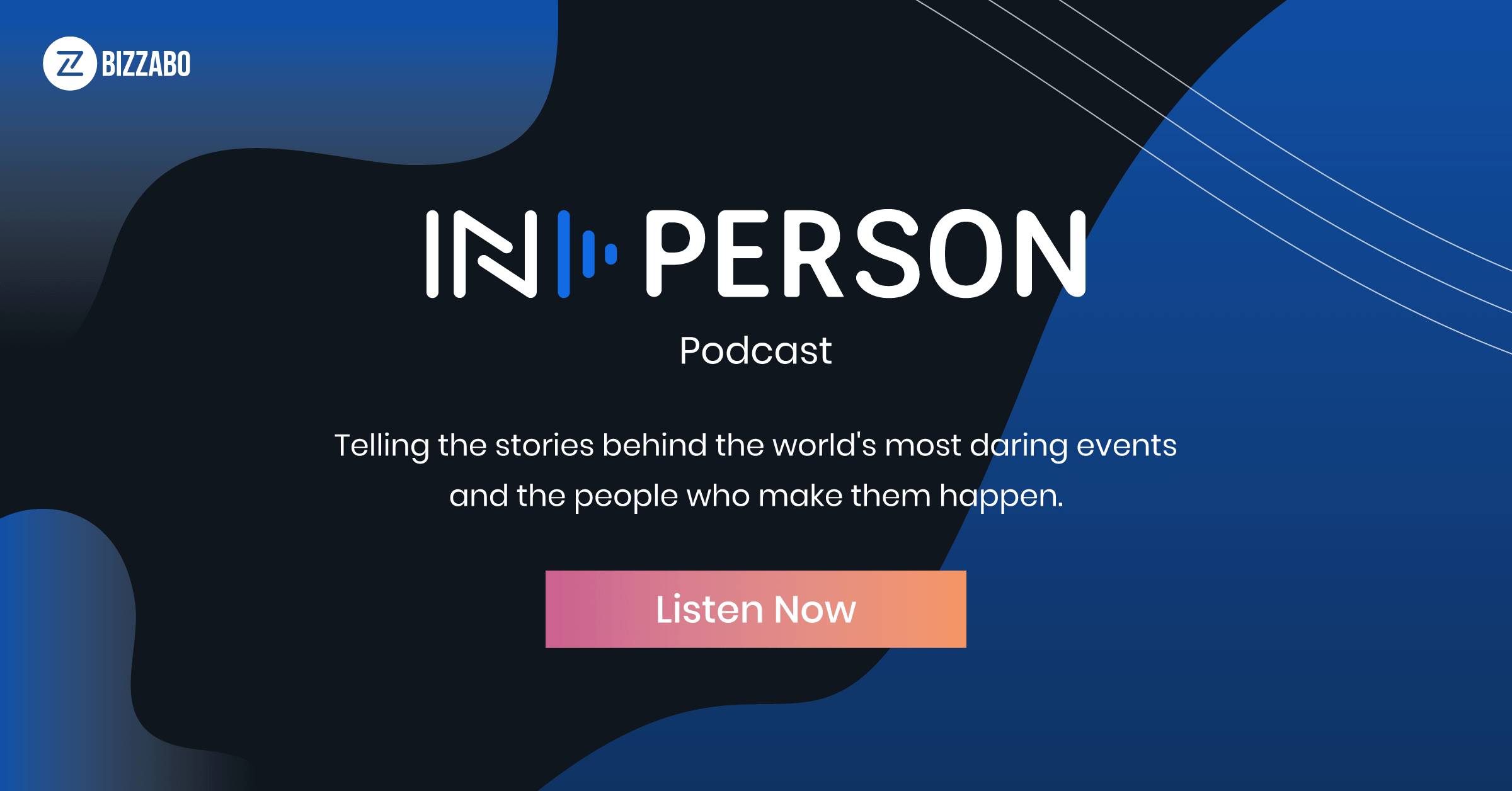
Specific: The more specific you are when articulating your event goals, the closer you will be to achieving them. Asking detailed questions can be a great way to come up with comprehensive answers.
Measurable: Specific goals are all the more effective when they can be quantified because you are then able to measure their direct impact. Easily measurable factors like costs and revenue are the best way to answer the question, "How will I know that my goals have been achieved?"
Achievable : Keeping in mind the difference between ambitious and unrealistic, make sure to set goals that are able to be reached but never out of reach. You should set a goal that you think you and your team will reach 50% of the time if you had to repeat the event. You can set an additional "reach goal" that you think can be reached 10% of the time, which would serve as motivation for you and your team.
Results-Oriented : Goals should measure results, not activities. While it might be helpful to send 50 individual emails to prospective event sponsors, a better goal would be to secure a hard commitment from 5 event sponsors within the next 6 months.
Time-Bound : All goals should have subsequent deadlines. Create a timeline for your goals and analyze how they will develop over different points in time.
For a more in-depth discussion of event marketing goals, be sure to download the SMART Event Marketing Playbook .
11 KPIs for Measuring Marketing Success
"We have a lot of KPIs that center around, 'did we move the needle in terms of how people understand and view IBM?'"
—Colleen Bisconti, VP of Global Conferences at IBM
Need more inspiration on how IBM manages their global event strategy? Listen to Colleen Bisconti on the IN-PERSON Podcast.
1.Registrations
The total number of registrations is obviously an important metric to determine event success. However there are a number of ways to slice this metric to ensure that you are gaining the most important insights. You can look at registrations over time to see which months saw the highest demand for tickets. Or divide registrations by ticket type to better understand which tickets were most popular among attendees. There is plenty of insights to draw from registration data. It's just a matter of asking the right questions and having the right event technology to help find the answers.
2. Gross revenue
If it is a paid event, gross revenue is a very important indicator of event success. It is also a metric that must be delved into more deeply. Besides the total dollar amount, the gross revenue can reveal other key insights such as the demographic of attendees that were most present at the event, the type of tickets that sold most quickly, and the time of year when ticket sales were at its peak. All of these key insights can be drawn from the gross revenue metric.
3. Attendee satisfaction
Whatever your specific goals may be, all events share the same overall objective of satisfying attendees. But it is important to specify your definition of "satisfaction." Was the goal to simply entertain your attendees during the conference? Did you want them to take away specific knowledge about your product? Make sure to be intentional with this particular metric to gain the most insight about your attendees. A great way to measure overall attendee satisfaction is by calculating the Net Promoter Score which is summarized in the figure below.

4.Attendee engagement
Understanding attendee engagement can be a clear indicator of whether the event content was relevant and valuable to attendees. Event marketing is about fostering relationships with customers and prospects so monitoring their engagement level during the event would help better gauge the success of the relationship building.
5. Social Media Mentions
In today's digital-centric world, social media and events go hand in hand. Events themselves have become a source of content for both organizers and attendees. It's no wonder that 98% of consumers create digital content at events and that 100% of those attendees share that original content on their social media channels. Thus, maximizing social media mentions is crucial for overall event success and in ensuring that your event brand is reaching audiences all around the globe.
6.Speaker page engagement
One of your main objectives should be to offer event content that resonates with attendees. One of the main sources of content during your event will most likely be the speeches and keynotes. Thus it is important to ensure that your speakers are offering valuable knowledge that is connecting with attendees.
One way to measure this impact is by monitoring each speaker's profile page. How many times has their page been viewed? How many likes did each page receive? Engagement metrics like these will show if your event content was relevant for the attendees present.
7. Total check-ins
Make sure to record the number of check-ins during the day(s) of the event and compare this number against the total registrations. A high discrepancy between these two figures would be worth looking into. Similar to registrations, the total number of check-ins can be sliced in different ways to better understand the attendee demographic.
8. Cost to revenue ratio
The total revenue figure is unimportant if it is not compared against the total event cost. This ratio is crucial in helping you understand the quantity and quality of resources that were required for the event and if the resources helped to achieve your event marketing goals.
9. Customers acquired
From the number of qualified leads you collect from the event, keep track of which ones actually resulted in a closed deal. This will help you calculate the direct ROI of your team's event marketing efforts and help you strategize for future events. Understanding which tactics worked and which did not when attempting to gain new customers is a crucial insight for event marketing.

For a deeper dive into event success metrics, make sure to check out our blog post on event KPIs . Or click below to download our guide to event data.

When following an account-based marketing strategy for your events, there are some additional metrics to review. Because ABM is an account-focused strategy, event organizers should look to compare the number of target accounts against their event numbers like registrations, revenue, and engagement. Two additional KPIs to keep in mind during your event include:
10. Number of Target Accounts attending your event
By capturing the number of target accounts attending your event, you're able to diagnose the alignment between your event content and your accounts' interests. A successful event includes a high percentage of target accounts in attendance. This metric would show the alignment between your event content and your accounts' interests.
11 . Number of Closed Accounts from specific events
A great way to show your event is ROI+ is to surface the number of target accounts that have closed from specific events. Ultimately, attributing an event to a customer sale is essential when thinking about event ROI.
For additional insights on how to get an account-based marketing event strategy up and running, check out our eBook on ABM for Events .
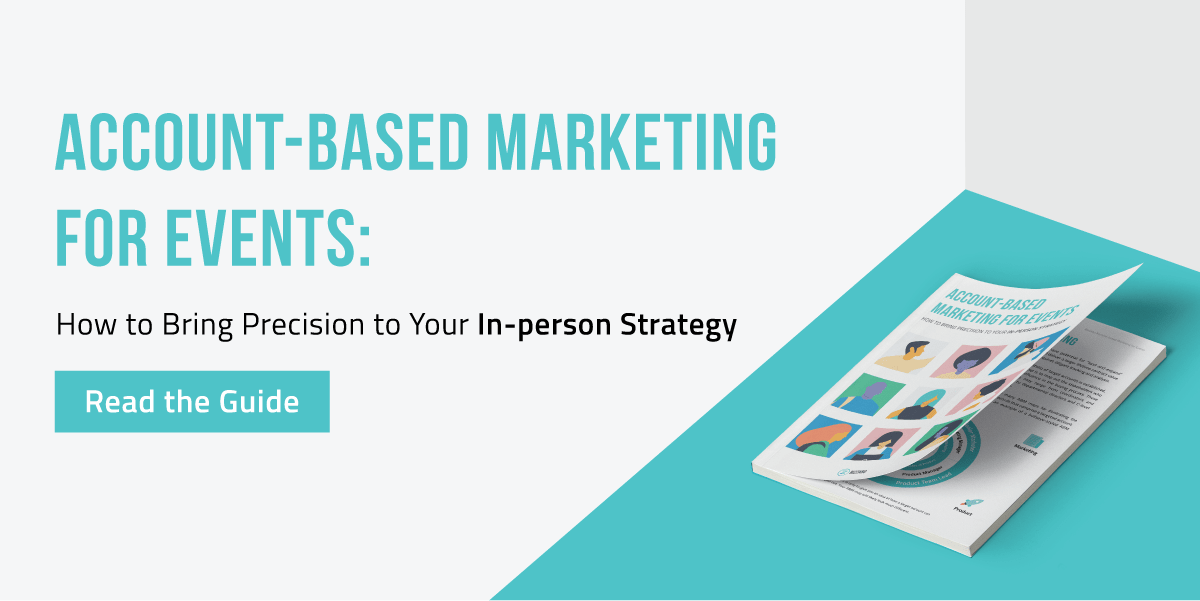
back to top
3 Tips for Finding the Right Event Venue
Once your goals are set and your KPI's defined, finding the right event venue will be crucial in determining event success. There are many things to consider when choosing a venue and to help you start thinking in the right direction, check out the 3 tips below.
1. Review the Data
Make sure to dig into the data of previous events that you've organized to analyze which aspects worked well and which needed improvement. If you had attendees fill out post-event surveys, use these responses as your guide. Based on the feedback, choose an event venue that caters to those needs. For example, if you're building a roadshow series, you may want to see which cities (Boston, Toronto, Los Angeles) attract the most prospects and customers.
Did your previous event venue provide enough space for effective networking? If not, it would be best to find a venue that better facilitates networking sessions. Ask yourself detailed questions based on previous events as well as attendee survey responses in order to better understand what type of venue will best address those areas of improvement.
2. Draft an Interior Design Plan
Creating a space that induces creativity and collaboration is just as important as the event content itself. The physical environment plays a significant role in inspiring attendees to engage and actively participate.
To create such an atmosphere, lighting is always an important factor. Effective lighting can be used to drive networking or to help attendees focus on a specific aspect of the event, such as a speaker or an exhibitor.
In addition to lighting, the choice of furniture can also help create an environment for increased interaction. If you're organizing an event in an outdoor space, bar tables and chairs encourage mingling. Smaller seating areas would induce more intimate conversations.
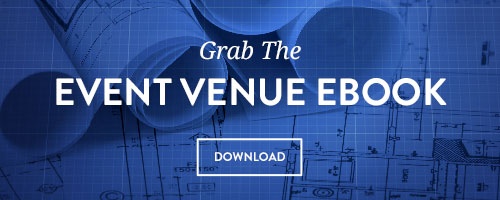
3. Consider Accessibility
It is always important to make sure your event is easily accessible. Make sure there are clear pick up and drop off areas for attendees, clear directions on how to arrive at the venue, and ample parking space if needed. Your attendees should be able to focus on the content of event rather than worry about getting to their destination. Keeping in mind wheelchair accessibility is also crucial for ensuring an inclusive event experience. Make sure to ask venues about wheelchair accessibility and plan your event agenda accordingly.
For a more in-depth look, check out our guide to finding the perfect event venue .
back to top
How to Create An Event Website
One of the first touch points for potential attendees is the event website. Their website experience must be exceptionally memorable in order to increase their likelihood of registering for the event. And a memorable website isn't just about the aesthetics. High SEO ranking, relevant content, and showcasing the event brand are all important factors in creating an amazing event website.
Event Website Design
The cardinal rule of exceptional design holds true for event websites : simplicity. Because event websites promote a single offering (the event itself), it's important to keep the messaging concise and on point. Check out these 3 tips on how to keep the design concise and simple.
"Your website is your brand."
—Devin Cleary, VP of Experiential Marketing at PTC
Want to learn more about how PTC develops a transformative event brand? Listen to Devin Cleary on the IN-PERSON Podcast.

1. Use video
Having a loop video in the background with logo front and center is a great way to grab visitors' attention while maintaining a minimal homepage layout.
 Source: Bizzabo
Source: Bizzabo
2. Maintain a consistent color and font style
Be sure to keep a simple and consistent color scheme as well. The same goes for font style. In the example below, you will see that the Marketo Marketing Nation event website contains only four colors: purple, black, white, and blue. This color scheme directly aligns with the brand, providing a consistency that will be memorable to attendees who visit the site.

3. Create a countdown clock
To add more dynamism to your home page, consider placing a countdown clock as part of the header to build up anticipation for the event as well as create a sense of urgency for potential attendees to register.
 Source: Looker JOIN
Source: Looker JOIN
Want to become the Michaelangelo of event website design? Check out this comprehensive guide to the principles of event website design .
back to top
Event Website Content
While maintaining the rule of simplicity, an event website should offer an array of engaging content. Each piece of content should be relevant to the event as a whole and should influence readers to register for the event and/or spread the word on it.
"You're not aiming for the proverbial mile wide, and inch deep, you're aiming for an inch wide, and a mile deep, really something that is a strong, deep, specific focus on the topic at hand."
—Hugh Forrest, Chief Programming Officer at SXSW

1. Blog Content
Content marketing in general has become very popular over the last few years because it is a cost effective way to provide a positive experience for consumers and thus generate more business. Providing valuable content in the form of blog posts on your event website will drive more traffic to your site and thus more event registrations.
A popular blog post form is the list format. Create list articles that build up anticipation for your event while educating readers on a specific topic. A great example of this would be how Social Media Marketing World creates posts that directly add value to their event brand.
Some articles, such as " 6 Reasons To Attend Social Media Marketing World," get straight to the point. Other articles, such as "6 Social Media Marketing Attribution Models and Tools to Help Marketers," have a more educational intention but nonetheless point readers into learning more about the event. Having a variety of posts like these will provide knowledge to readers as well as increase your event website's SEO ranking. For more info on creating content to promote your event, click on the ebook below.

2. Video Content
Another medium of content is video. Gainsight Pulse (the annual Gainsight conference) does a great job of including video content from the previous year's event to give website visitors a glimpse of what to expect for the upcoming conference.

Video content from the previous year's conference is always great to include on the website because it builds up anticipation for the event as well as creates the illusion that the event is never "over" – the momentum is simply building up towards the next conference. For more best practices on video content, check out this post on how to promote your event through video .
back to top
How to Improve Your Event Website SEO
After all the effort into creating a beautifully simply event website with valuable content offerings, it is crucial that people get the chance to see it! This is where search engine optimization becomes crucial. Organic search accounts for about 28.5% of all traffic driven to websites on the internet. Make sure that you have a sound SEO strategy in place.
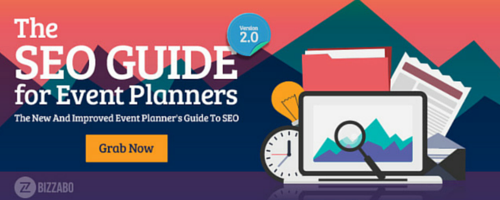
On-page ranking factors
Make sure you are using target keywords on the event webpage. For example, if your event is all about B2B digital marketing, make sure to have this phrase strategically placed throughout the website. Including the keyword in the page title, body of the page, and meta description of the page will all help for you to rank for that keyword.
Internal links can also help to increase your SEO ranking. This means linking to other web pages within the same event website. When linking internally or externally, the link should be anchored to the keyword or keyword phrase you are targeting. If your target keyword is "B2B digital marketing", linking to "click here" is not nearly as effective as linking to "B2B digital marketing."
Off-page ranking factors
"Though a much tougher practice, this off-page ranking best practice will help strongly boost your event website SEO. Link building consists of other websites linking directly to your event site. The more external sites that link to your event website, the stronger your SEO rank. In order to achieve this, you have to build key relationships with other thought leaders and bloggers in your industry. Building quality relationships offline will lead to amazing results online for your event.
These are just a couple of tips to set you on the right path. For a more in-depth look, check out our guide to events and SEO .
back to top
How to Promote an Event on Social Media
Capitalizing on social media channels and utilizing each of them to maximize exposure is key to event success. In addition to being a great way of generating interest for your event before, during, and after your event (hello, FOMO), social media engagement also represents a valuable opportunity of measuring event ROI.
"When we're marketing for our Under 30 Summit—that audience gravitates a lot more to social. So they will respond more to a promotion on Instagram."
—Chardia Christophe-Garcia, Marketing Director at Forbes
Learn more about the event promotion strategy at Forbes on the IN-PERSON Podcast.

4 Social Media Best Practices for Events
1. Use Event Hashtags
Use an event hashtag and place it prominently on your website. Encourage website visitors and event attendees to use the hashtag when engaging on social media. Not only is this a great way to encourage conversation about your event, it's also a great way to track engagement. While you can manually track hashtags yourself, some event engagement platforms will track them for you.
"Letting people know about your event hashtag in advance is an amazing promotional tool. When people start seeing tweets and retweets and posts that have a certain hashtag—even if they don't know what it's about—that hashtag will make people interested in it and go to the event."
—Neal Schaffer, CEO & Principal Social Media Strategy Consultant, Maximize Your Social
2. Leverage Stakeholders
Make marketing your event easier by bringing the assistance of stakeholders. Be they speakers, sponsors, or exhibitors, encourage your exhibitors to promote your event. After all, they will benefit from more people being at the event and more people engaging with them. One of the best ways to do this is with speaker cards. Create simple visuals that promote stakeholders that will be appearing at your event while also promoting the event themselves. With any luck, stakeholders will want to share this information themselves.
3. Turn Attendees into Event Promoters
Don't just stop at turning stakeholders into promoters; do the same with your attendees. Offer special discounts or prizes for attendees who share the event on social media and get people to sign up for it. You can automate this process by using promotional tools like Ticket Boost.

4. Create Online Communities
Even before the event starts, you can create vibrant communities that bring people together. Twitter chats, Slack channels, Facebook groups, and LinkedIn groups all ways that you can start building up buzz for your event before, during and after it. Seventy-five percent of event-goers attend events to network. Giving them more opportunities to do so will only make your attendees more satisfied.
For more information, check out event marketing wisdom from 12 social media experts.
back to top
3 Keys to Land the Right Event Sponsors
Landing event sponsorships and partnerships is critical to producing a successful event. It's not just a matter of finding sponsors and partners, it's about finding the right ones.
Join Dave as he discusses three keys to landing the right event sponsors:
{{ script_embed('wistia', 'cd1j6sae78', 'undefined', 'responsive') }}
back to top
Event Lead Generation Strategies
Whether you are hosting a VIP dinner or a user conference, live events can be invaluable for generating leads and accelerating the sales pipeline. We spoke to some of the top event marketing leaders in the industry about how they use events to push their sales goals. Click the button below to check out our lead generation guide.

back to top
Partnership Event Marketing
Two heads are better than one.An increasingly popular form of partnership marketing is partnered live events. According to Forrester research , 22% of all partner marketing campaigns are comprised of live events.
When planned thoroughly and executed properly, partnered events can have a significantly larger impact than if an event were organized by one company, alone. The opportunity toshare knowledge, increase brand awareness, and strengthen relationships within the industry are all part of executing a successful partnered event. But before diving into such a demanding endeavor, it's important to take the necessary steps that will ensure a successful event. Here are three quick tips.
1. Articulate why you need a partnered marketing event
Before even looking for a partner to join the event, honestly assess why you need a partner in the first place. How will a partnered marketing event help you achieve your goals as a company? Are you looking to increase brand awareness through a co-branded event? Are you hoping to expand your target demographic to a wider audience? The more specific and honest you are with these questions, the simpler it will be to find the right partner and have a successful event.
2. Clearly specify the roles for each partner
After the goals are established and buy-in is secured, it's time to specify the roles of each partner. Who will be responsible for the social media campaign? What type of marketing collateral will be needed to execute these campaigns? On the day of the event, which company is responsible for registrations and check-ins? Of course, all of these tasks can be shared but it's crucial that each task and role is described in detail. This way, there are clear expectations on both sides and it will be much easier to keep each member accountable for specific assignments.
3. Address any and all conflicts of interest
Whenever working with an outside business partner, there is always the potential for objectives to be misaligned. Yes, the potential upside of a successful partnership is always high, but if it is executed carelessly, a partnership can easily take a turn for the worst. That is why it is absolutely necessary to address any conflicts of interest during the very stages of the event planning process.
For more information, check out our Partnership Event Marketing Tips.
back to top
Account-Based Event Marketing
Account-based marketing (ABM) centers around the idea of targeting a specific list of key accounts whose needs perfectly fit your product offering and thus add most value to the company. The campaigns for each of theses account are then personalized to ensure maximum engagement.
ABM campaigns typically focus on outbound marketing efforts (direct intervention with leads to move them through the last stages of the buyer's journey), but they may include inbound efforts (blog posts, social media, webinars), as well. When executed properly, ABM is mutually beneficial for both the supplier and the customer since the strategy is specifically designed to directly address the client's needs, which in turn results in valuable long-term partnerships.

Account-based event marketing empowers businesses to be more efficient in sales acceleration and ultimately in closing deals. As opposed to standard "lead generation" strategies where the goal is simply to get more leads, account-based marketing strategies focus the efforts of marketers on accounts that are most likely to close and to stay recurring or "life-time" customers with strong lifetime customer value (LCV). Meanwhile, the advent of various ABM tools have made it easier than ever for marketers to leverage ABM strategies.
For a comprehensive overview of ABM and how it can be applied to events check out The CMO's Guide to Account-Based Event Marketing.

back to top
How to Integrate Event Data
Executing on event marketing strategies involves plenty of data points. Collecting the right data is a necessary first step in maximizing event success and optimizing for future events. However, simply collecting the data isn't enough. More so than being data-driven, event marketing should be insights -driven.
Gathering the right insights requires data sets that "talk" to one another. Integrating your data to tell a clear story is a sure way to achieve event marketing success. Thus, it is necessary for event organizers to integrate data across platforms to ensure a more holistic and insights-driven event marketing strategy.
Some platforms come with the ability to talk with other ones out-of-the-box. These platforms are said to have native integrations. For platforms that don't have native integrations, even marketers will want to use an integration tool like the ones listed below.
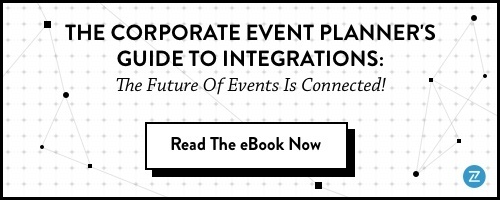
3 Event Data Integration Tools
"The biggest thing for event professionals with integrated solutions to remember is that everything can be done."
—Ashley Hockney, Marketing at Zapier
There are numerous ways to integrate platforms without the need for extensive technical knowledge. Here are three tools that help to create an integrated automation solution.
1. IFTTT
Pronounced "ift", this free web-based service is capable of creating complex chains of automated actions. IFTTT is comprised of two simple features. The triggers are "if this" and the resulting actions are "then that." There two features make up applets, the core of this automation tool.
2. API
API is an acronym for application programing interface. The simplest description is that APIs are used to allow different software programs (like Bizzabo and your marketing automation software or CRM) to interact and share data. When integrating your event data to a CRM or other tool, custom APIs allow you to "call" for specific information. Data syncing methods can be customized as unidirectional or bidirectional and can also be customized in terms of syncing data at once, during a certain period of time, or to continuously sync. Because of this, APIs allow for the most flexibility when integrating your event data.
3. Webhooks
Webhooks are used to send data from one web application to another after an action is completed. By sending real time data from one system to another, your processes will be automated. You can use webhooks to send data notifications, changes, and any other real time updates. By specifying a URL for receiving the information you are able to trigger a transfer of data you have stored in your event app to any desired application. Similar to Zapier, Webhooks are comprised of two different types of components. Whenever a trigger occurs (such as a charge being captured or a ticket email changed) data is sent to a specific endpoint (a URL dened by the user to receive events).
4. Zapier
With over 750 apps and growing, Zapier is one of the foremost data integration platforms out there. It's also extremely easy to use. With Zapier, event planners create Zaps to build a workflow between different apps. Zaps are made of triggers and actions. A trigger is an event that happens in one app and an action is the event that Zapier automatically performs in another app. For example, whenever a new person registers to your event (trigger) a new row would be added to a spreadsheet in google docs that you share with your team (action).

A glimpse at some integrations in Zapier.
For more information on event integrations, check out our guide to integrating event data.
back to top
Event Technology
Our research has shown that 80% of overperforming businesses leverage events and the majority of leadership (84%) believe in-person events are critical for overall business growth. As professional events continues to grow as an industry, event technology is also expected to grow.
In 2018, we saw over $738 million in spending for events and that number will continue to grow. The majority of business leaders intend to grow their total event budgets by 22% and that will include more investments in event technology.
"As we grew, our events became larger and there were more things that we needed to get to hit our registration goals. This also meant we needed to be able to depend a little bit more on our registration software. We started looking at different vendors, but I'm very happy to say we did choose Bizzabo."
—Janna Erickson, Director of Events at Drift

Event Management Software
Event management software is the central hub for all event organizing needs. From managing contacts, to scheduling email campaigns, to creating an event website, event management software allows you to control all aspects of the event planning process. In addition to features and functionality, it's important to evaluate data security. Below are some of the features that are commonly associated with event management software.
- Event Website Builder
- Event Registration Management
- Event Contact Management
- Event Email Marketing
- Event Sponsorship Features
- Event Engagement App
- Event Success Tracking and Analytics
Find the right event management software for your needs in the Event Software Buyer's Guide.
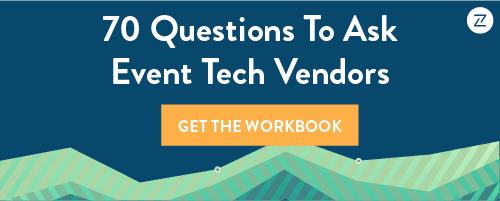
back to top
Wrapping-Up: Event Marketing and You
All signs point to event marketing maintaining its status at the most essential marketing channel for businesses—in 2020 and beyond. And there's a good reason why. Marketers finally have the technology that is allowing them to prove the ROI of their events to business leaders.
Interested in checking out the most loved software? Speak with a product expert today.
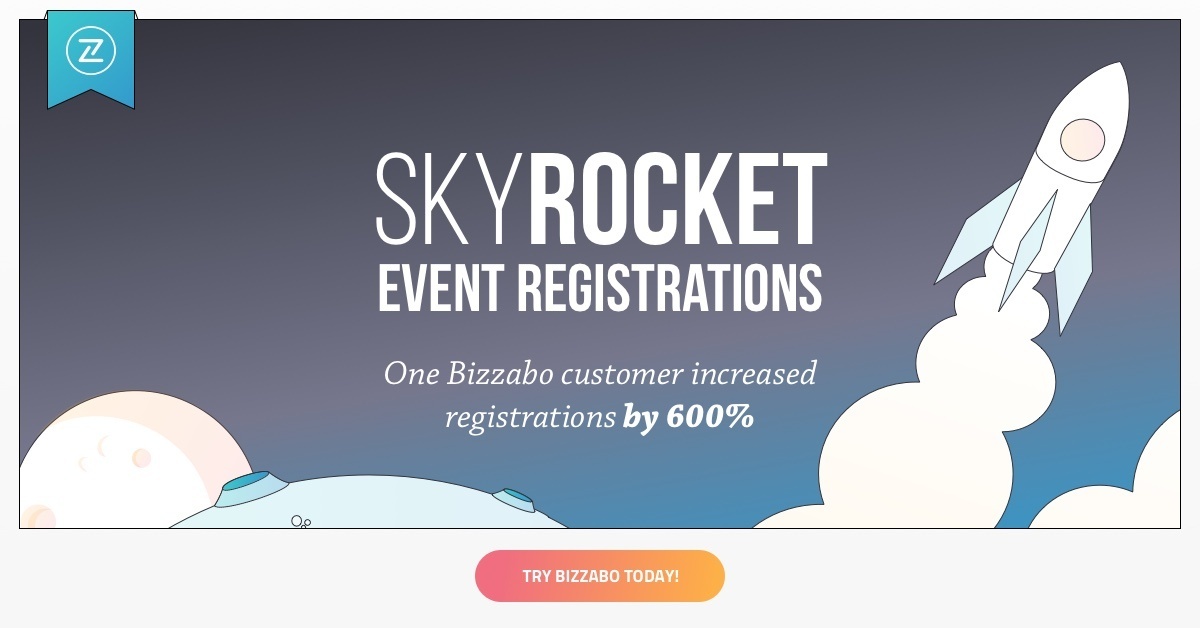
Note: This post was originally published June 1, 2017, and has since been updated for the new year.
Stay up to date with Bizzabo's latest.
You may also
be interested in
Ultimate Guide to Event Sponsorship in 2022
Event sponsorship can make or break an event. This article shares best practices for finding and securing the right partnerships...
How to Build a Business Model for Your Event Program in the Hybrid Era
As the event industry has shifted towards hybrid, so have the business models that support it. Here's how to keep...
3 Tips for Extending the Value of Events in the Hybrid Era
We posed a simple question to a roundtable of leading event marketers: How can you extend the value of events...
Smart Design Competing In Global Markets Video
Source: https://www.bizzabo.com/blog/event-marketing-guide
Posted by: johnsonsefuldsider1981.blogspot.com

0 Response to "Smart Design Competing In Global Markets Video"
Post a Comment